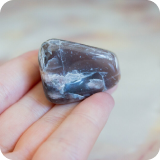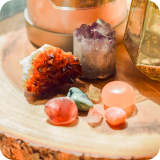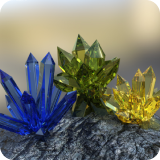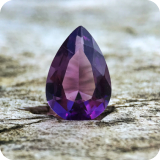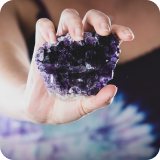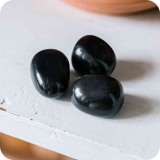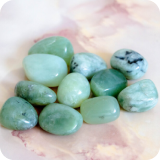- 15 Asbestos Crystals and Their Risks
- List of Toxic Crystals
- Is Malachite Toxic?
- Is Black Tourmaline Toxic?
- Is Tiger’s Eye Toxic?
- Is Dalmatian Jasper Toxic?
- Is Chrysocolla Toxic?
- Is Lepidolite Toxic?
- Is Lapis Lazuli Toxic?
- Is Bronzite Toxic?
- Is Lithium Quartz Toxic?
- Is Kyanite Toxic?
- Is Fuchsite Toxic?
- Is Carnelian Toxic?
- Is Calcite Toxic?
- Is Amethyst Toxic?
- Is Cinnabar Toxic?
- Is Eudialyte Toxic?
- Is Hutchinsonite Toxic?
- Is Stibnite Toxic?
- Is Torbernite Toxic?
- FAQ
- Start Using Crystals Safely
Did you know Tiger’s Eye contains asbestos? In fact, some dangerous crystals must not be soaked, heated, or even touched with bare hands.
What are the most dangerous crystals in the world? How to use them safely?
The most dangerous crystals in the world contain toxic elements, like Aluminum, Lead, Copper, Sulfur, Chromium, and Uranium.
Read on to learn about the most dangerous crystals in the world and how to use them safely.
15 Asbestos Crystals and Their Risks
One of the biggest markers of toxic crystals is crystals with asbestos.
You should never use asbestos-containing crystals with water or salt water. More importantly, avoid cutting, polishing, or tumbling them without safety gear. Instead, you can use them for crystal grids and altars.
Here’s a list of gemstones with asbestos and what they do:
Actinolite
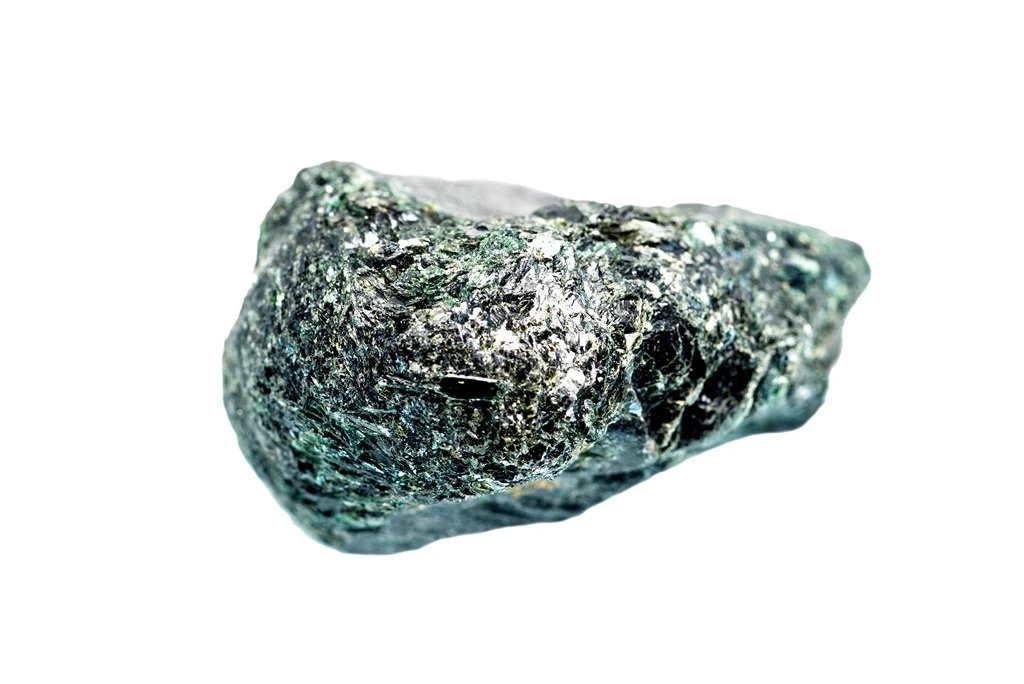
One of the lesser known crystals, Actinolite is a big no-no for elixirs, soaking, and other rituals with water and salt water. That said, the Hazard Risk of Actinolite is low.
Brucite
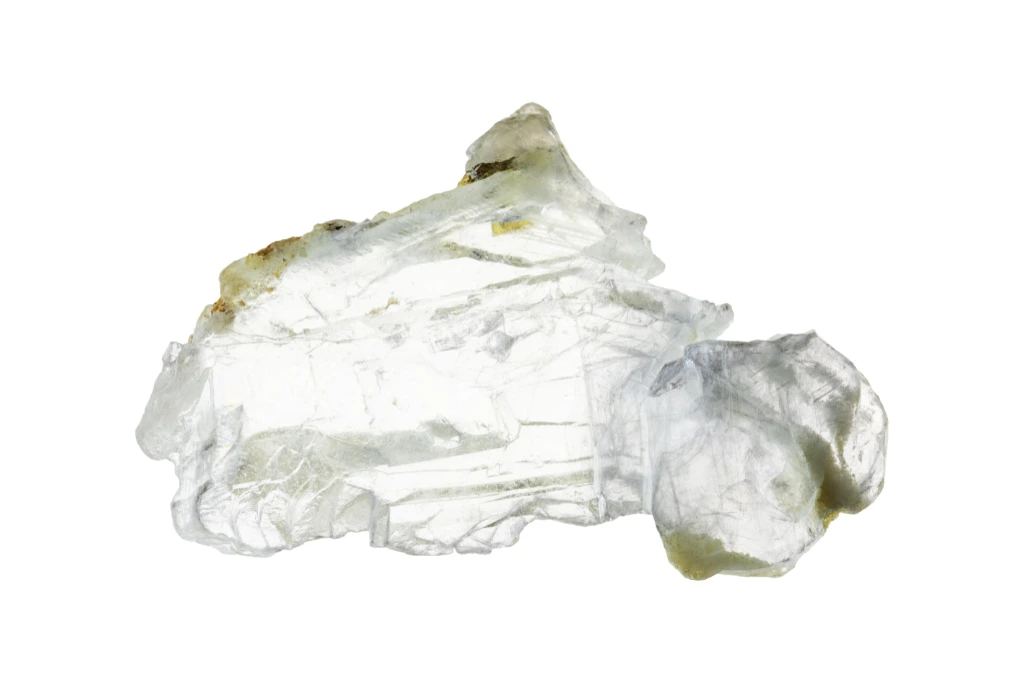
If you’re a fan of the pearly luster of Brucite crystals, keep a watch out because they’re toxic and soluble in acids. But they’re good for abundance when used safely. Brucite forms rosettes and masses in yellow or greenish-yellow colors.
Binghamite
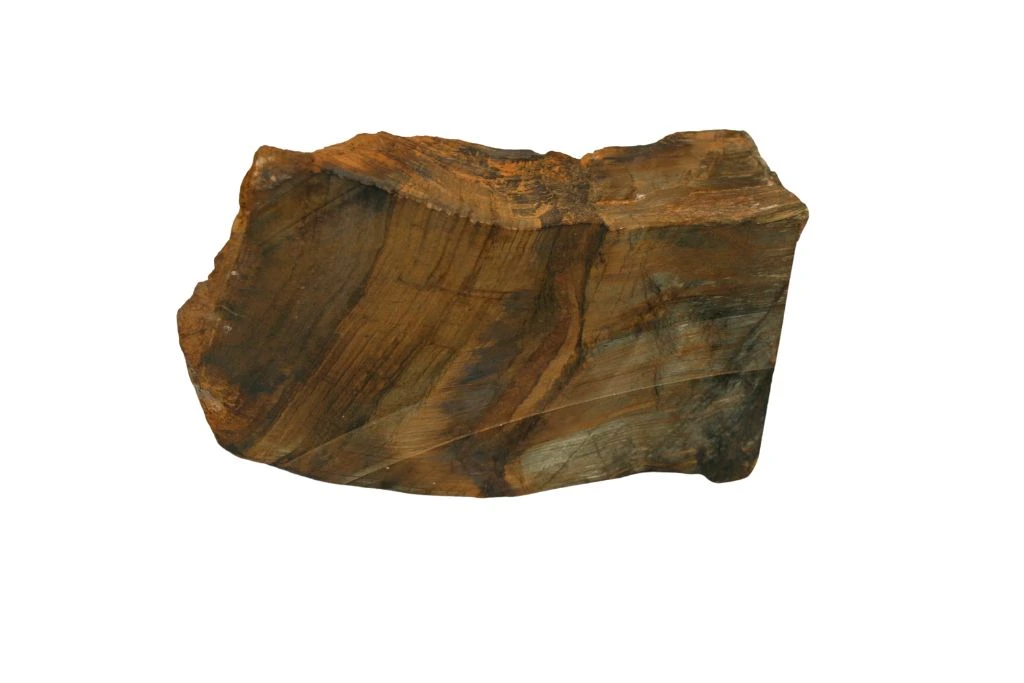
Also popular as Cuyyunite and Silkstone, it’s an Agate found exclusively in Minnesota with asbestos. Never use it for elixirs and wet rituals. Although it’s a good stone for courage and willpower, you should use it sparingly.
Cat’s Eye
There aren’t any Cat’s Eye stones because it’s an optical property of the stone. Cat’s Eye illusion or Chatoyancy in Green Quartz indicates asbestos. If your crystal shows this, be safe than sorry by avoiding ingesting or inhaling it.
Denisovite
Asbestos fibers on Denisovite crystals are green in color and highly toxic. You should never use it for making elixirs or direct infusions. Wash your hands after use.
Mesolite
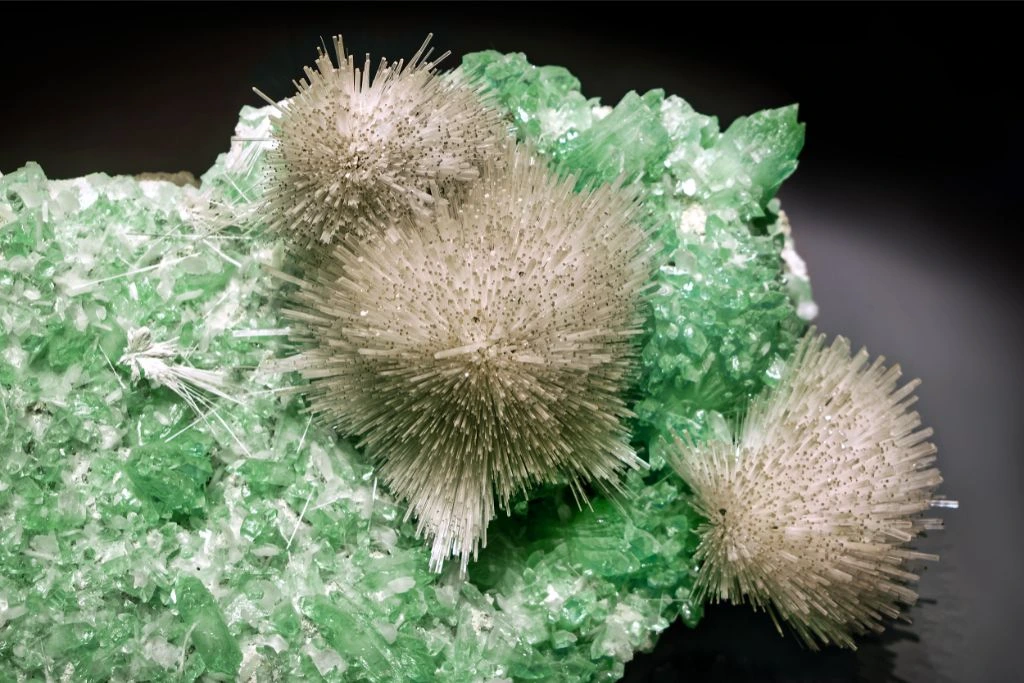
Mesolite is a fibrous zeolite that contains asbestos and is also carcinogenic. Although toxicity levels of Mesolite are low, you shouldn’t use it directly for elixirs.
Pietersite
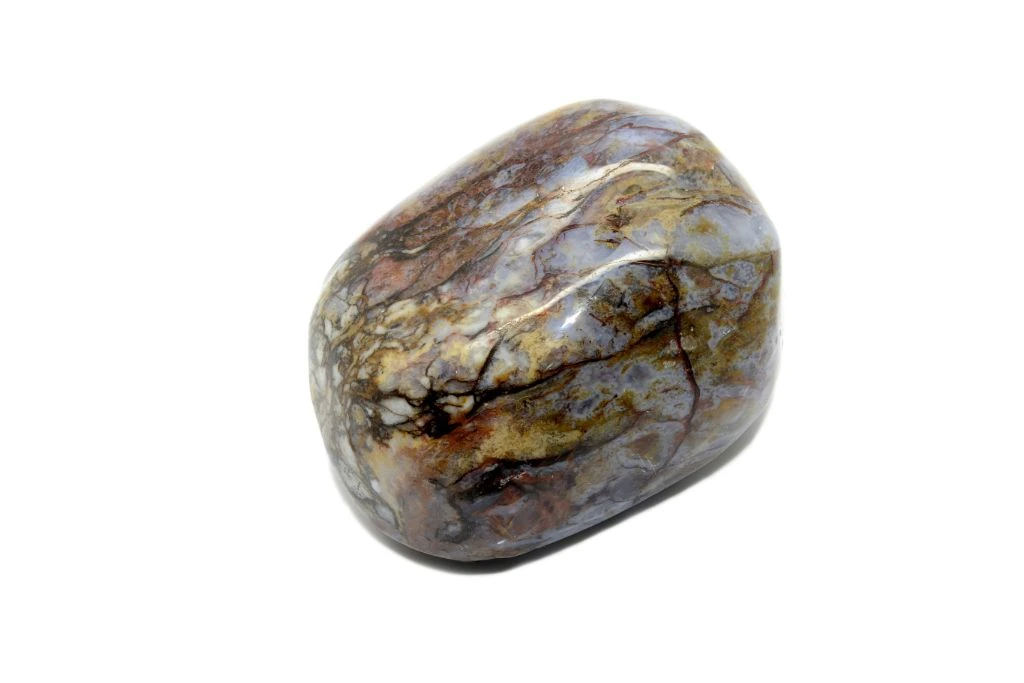
Much like Tiger’s Eye crystals, Pietersite contains Blue Crocidolite asbestos. You should not soak it directly to make elixirs.
Asbestos in Pietersite crystals is dangerous only when you inhale its dust when cutting, polishing, or shaping the crystal. It’s a good crystal for divination.
Serpentine
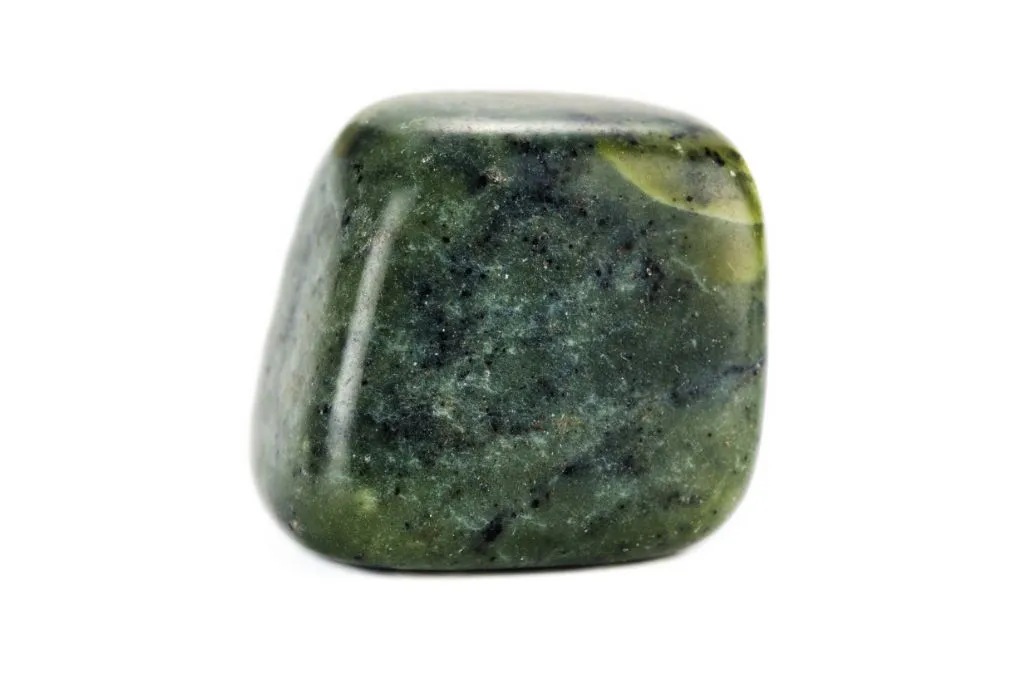
A well-known crystal, fibrous Serpentine also contains asbestos.
Did you know Serpentine can lead to respiratory disorders when inhaled? Moreover, the asbestos in this crystal ranges from 1% to 25%. Avoid using them for direct elixirs.
Chrysotile is another Serpentine crystal with asbestos you need to care for mindfully.
Scolecite
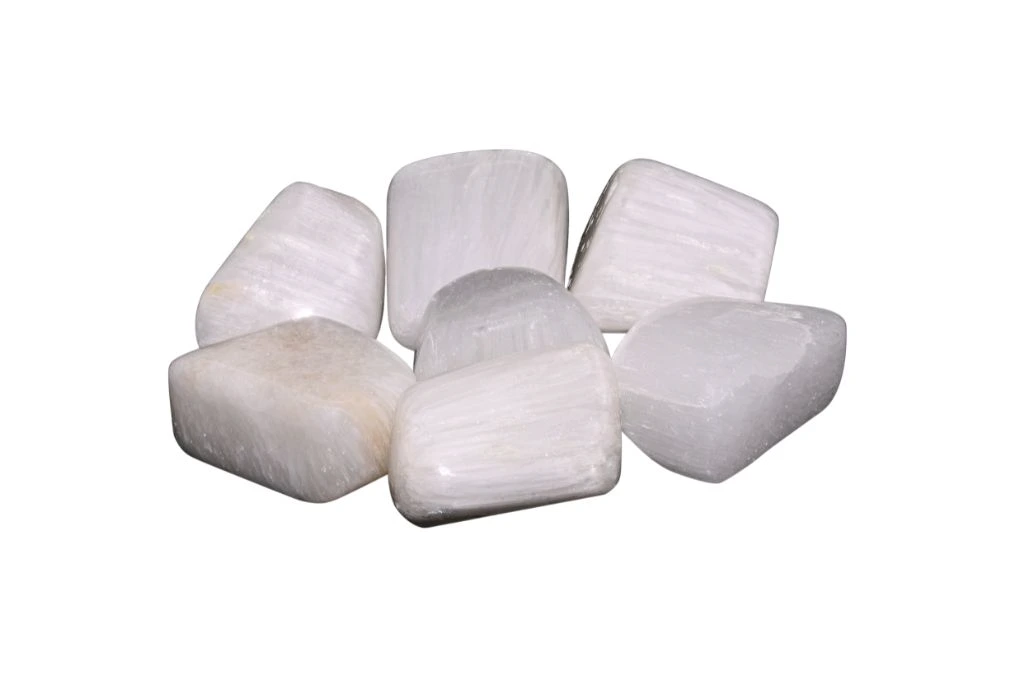
Scolecite is an asbestos crystal from the zeolite family with high vibration. It’s typically used for psychic abilities and cleansing.
While the toxicity of Scolecite is negligible, it has a fibrous structure. We suggest avoiding it in direct infusions for making gem water.
Tremolite
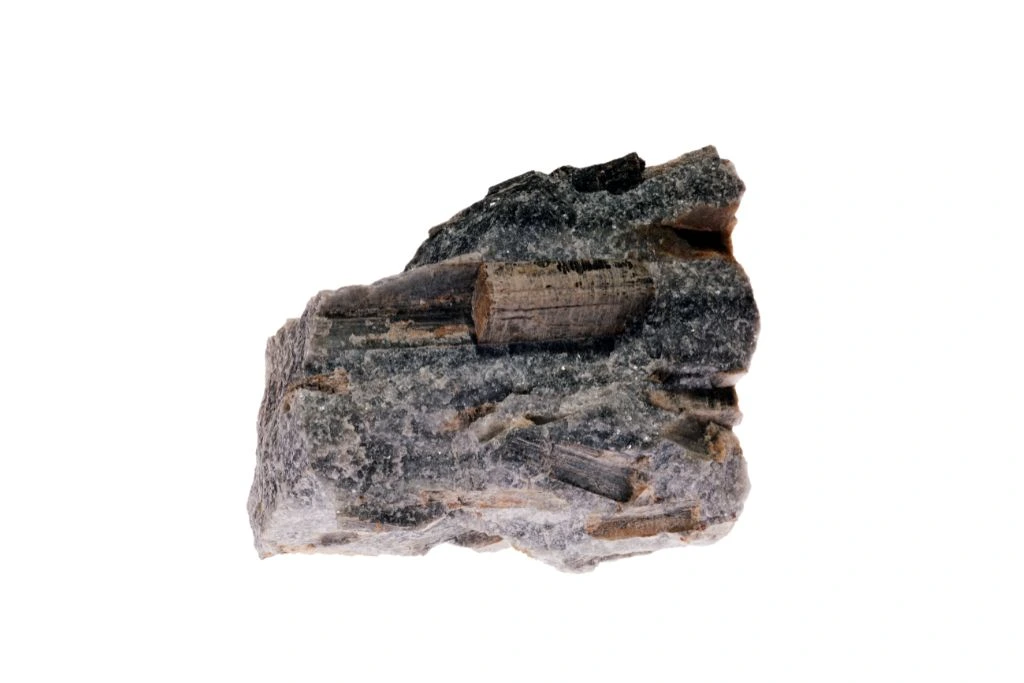
With a low risk of toxicity, Tremolite is another crystal with asbestos you need to handle carefully. Although it’s a good love crystal, you should avoid it in direct infusions. Wash your hands after touching Tremolite.
Tiger’s Eye
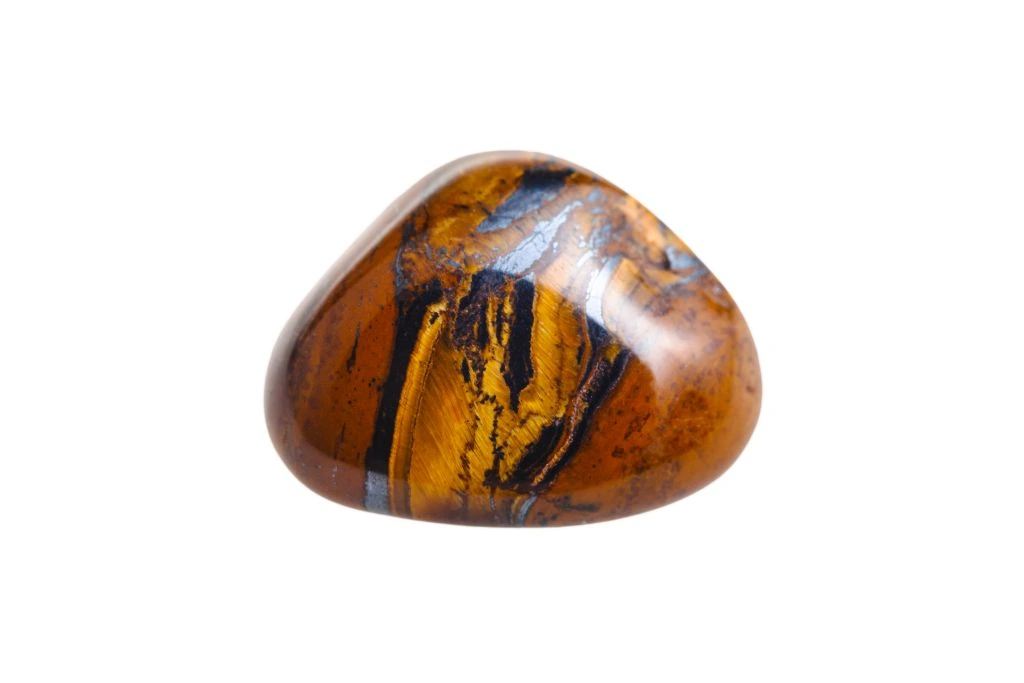
Although Tiger’s Eye crystals contain asbestos, Crocidolite asbestos crystals are buried deep inside the Quartz. Hence, they’re safe unless you inhale their powders.
Blue Tiger’s Eye or Hawk’s Eye may contain a higher amount of asbestos, so use them carefully and stick to indirect crystal elixir methods for all Tiger’s Eye varieties.
Tokkoite
While Tokkoite also contains the toxic Fluorine, asbestos is more worrying. Tokkoite is a psychic vision stone found exclusively in Russia. It also forms with Charoite. Avoid making direct crystal elixirs with either.
Ulexite
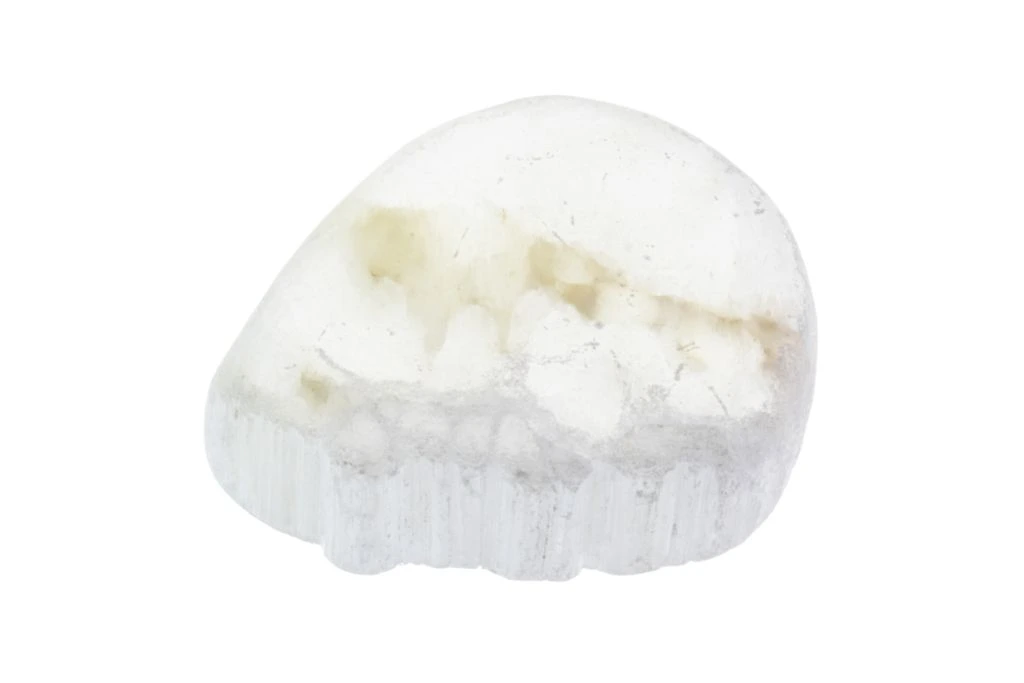
Another higher-power stone for intuition, clairvision, and fortune telling, Ulexite is a soft mineral that loses its luster and (some) asbestos when soaked in water. You should avoid using it for crystal infusions, as it contains toxic Boron.
Fun Fact: Ulexite is also called T.V. Rock!
Yuksporite
One of the rare crystals from Russia, Yuksporite contains asbestos in its yellow, red, and pink varieties. It’s a unique crystal that balances the higher and lower chakras.
We suggest avoiding it in direct infusions.
Zebra Jasper
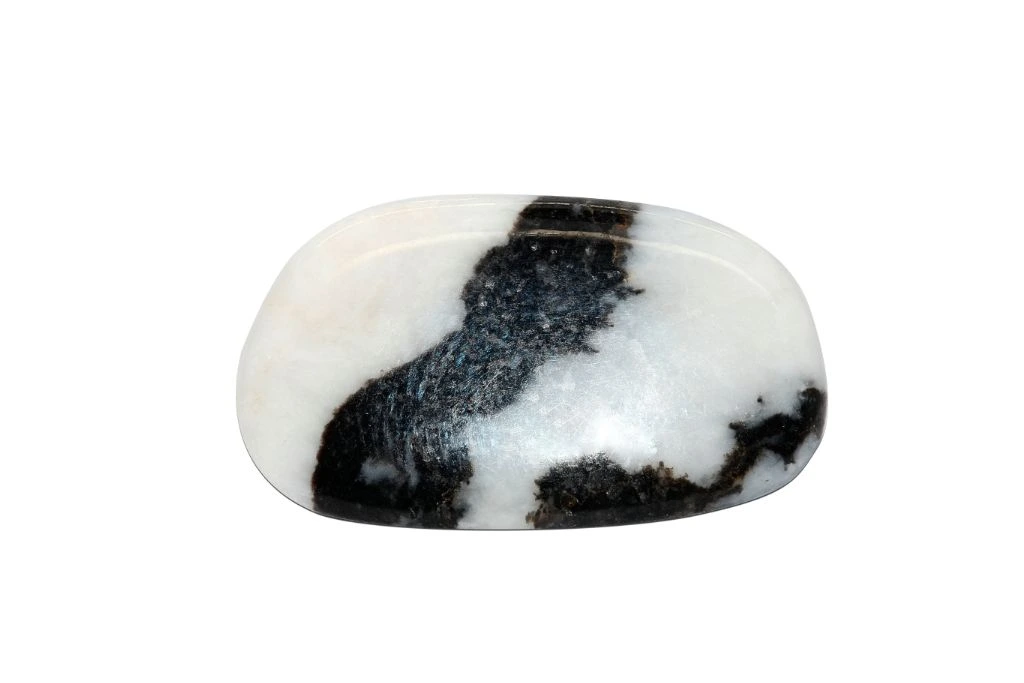
Another variety of Chrysotile asbestos is found in Zebra Jasper. The stone is excellent for harmony and peace, besides having a negligible risk of toxicity from touching or wearing it.
Fun Fact: Most people confuse Grossular and Hessonite Garnets as asbestos-based crystals because they’re from Asbestos in Quebec, Canada. Hence, these two Garnet varieties have zero asbestos in them.
List of Toxic Crystals
Other than asbestos, other elements like Sulfur, Arsenic, Copper, Lead, Mercury, Zinc, Chromium, and Uranium can also add to the toxicity of crystals.
Here’s the complete list of all the dangerous crystals in the world, why, and their risk level:
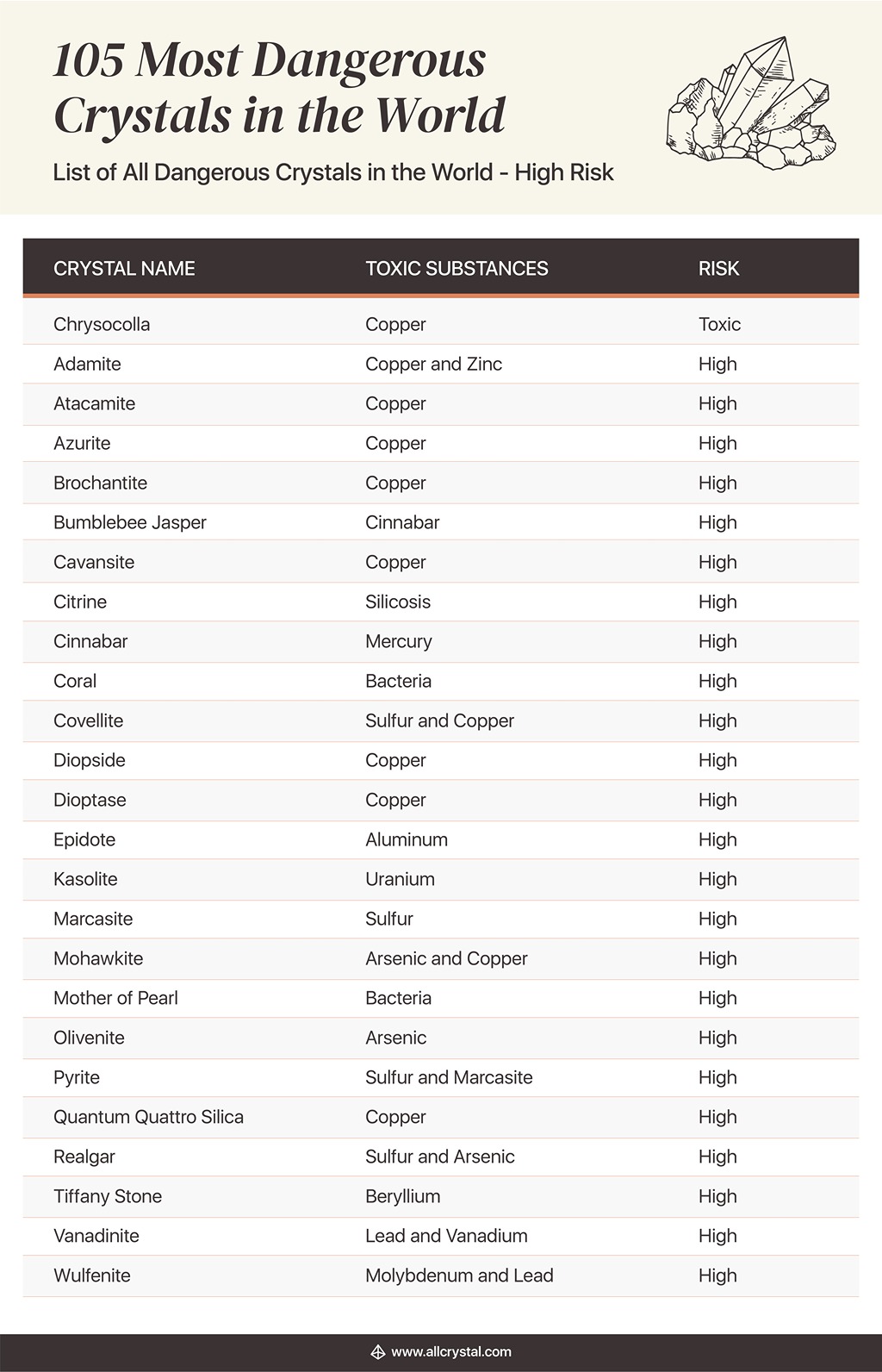
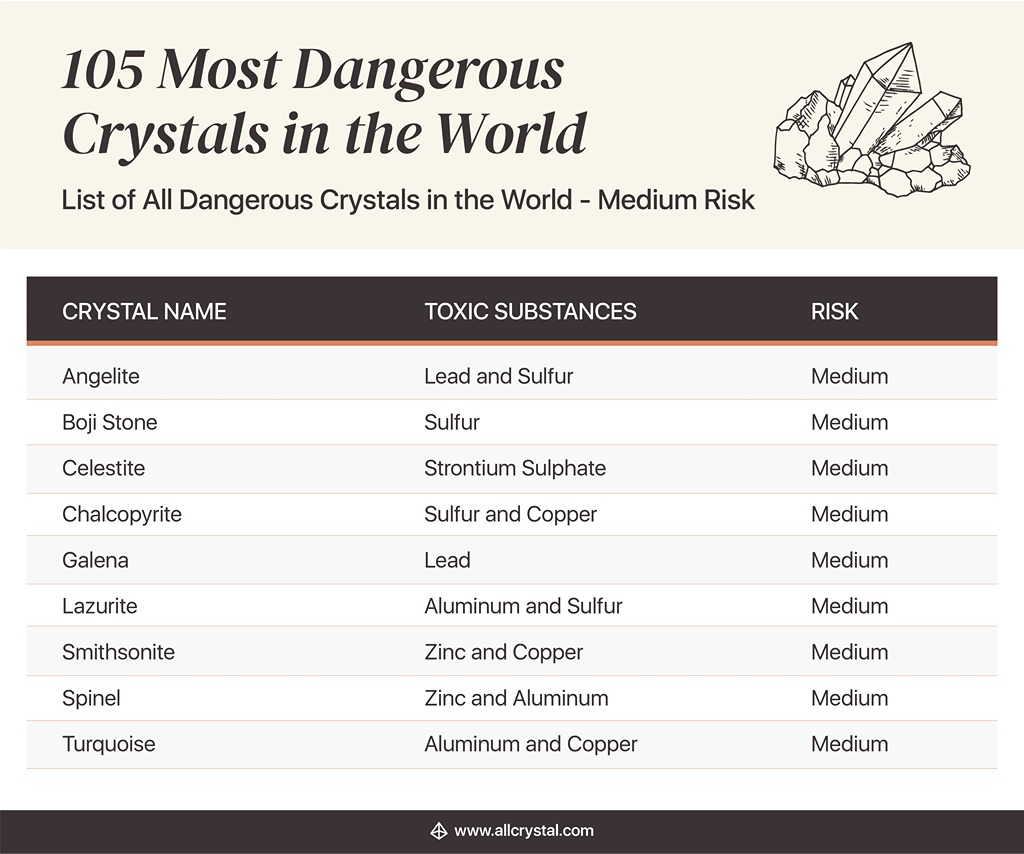
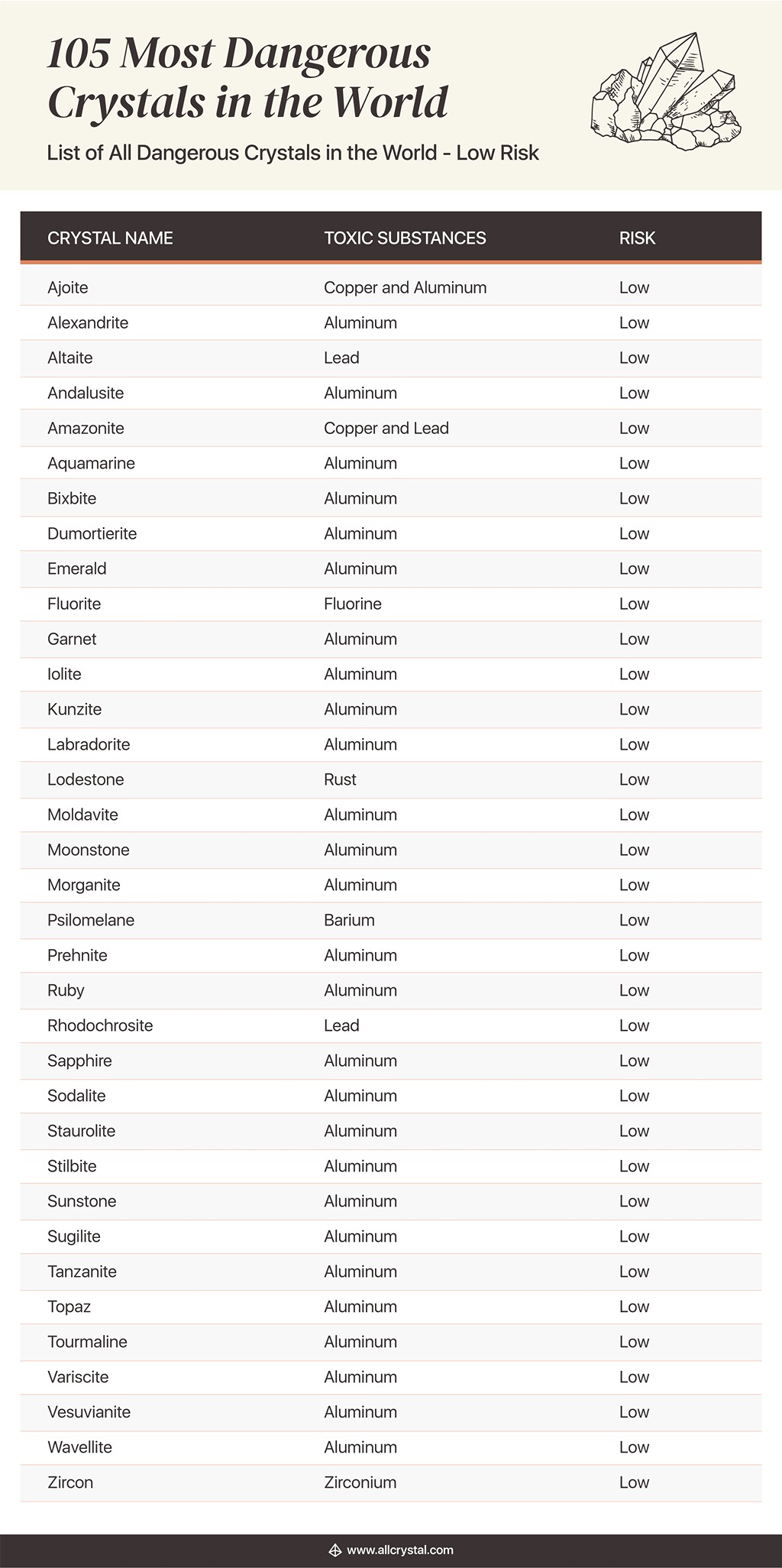
Is Malachite Toxic?
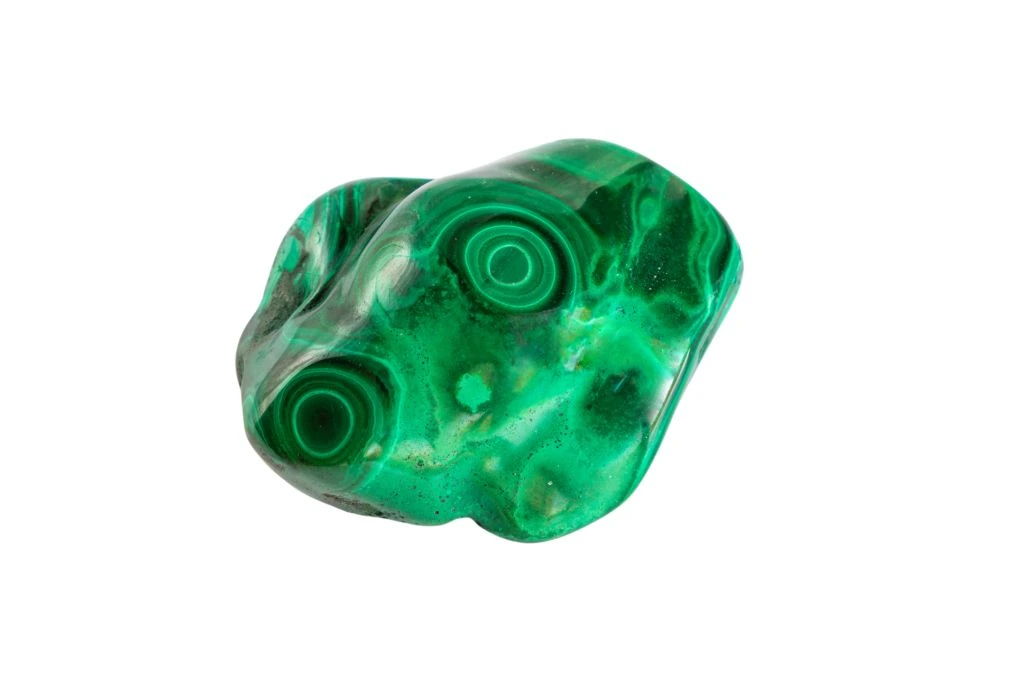
Yes, Malachite can be highly toxic in powder form because it contains Copper.
Is wearing Malachite dangerous? No, Malachite is not dangerous to wear, touch, or use. Spiritually, Malachite is a Heart Chakra stone that protects expectant mothers and those in need.
How to use Malachite safely?
You should avoid soaking Malachite directly for crystal elixirs and infusions. You should also wash your hands after handling broken Malachite crystals.
Is Black Tourmaline Toxic?
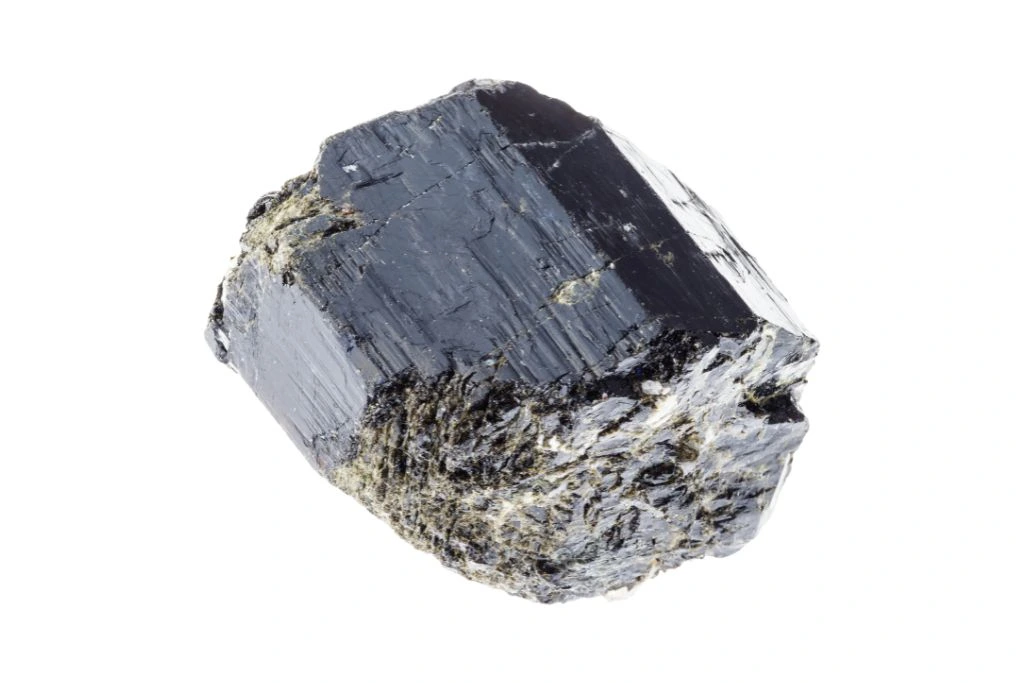
Yes, Black Tourmaline can be toxic because it contains Aluminum, as all the other Tourmaline. However, Black Tourmaline is not dangerous once cut and polished or worn as jewelry. It’s a Root Chakra crystal that grounds away stress, tension, and anxiety.
How to use Black Tourmaline safely?
Black Tourmaline is safe to use in solid form. The best part is you can cleanse Black Tourmaline with water, sans any worries.
However, never soak Black Tourmaline in water or salt water for extended periods. Avoid touching or handling broken Black Tourmaline.
Is Tiger’s Eye Toxic?

Yes, Tiger’s Eye crystals can be toxic in powdered form because they contain crocidolite asbestos. However, crocidolite is sealed off by the Quartz crystals over it. Hence, Tiger’s Eye is not dangerous when cut, tumbled, or polished.
How to use Tiger’s Eye stones safely?
You can lessen exposure to asbestos in Tiger’s Eye by following safety regulations when cutting, polishing, or powdering it.
Avoid touching raw Tiger’s Eye stones with bare hands and never use any variety of Tiger’s Eye for direct crystal elixirs.
Is Dalmatian Jasper Toxic?
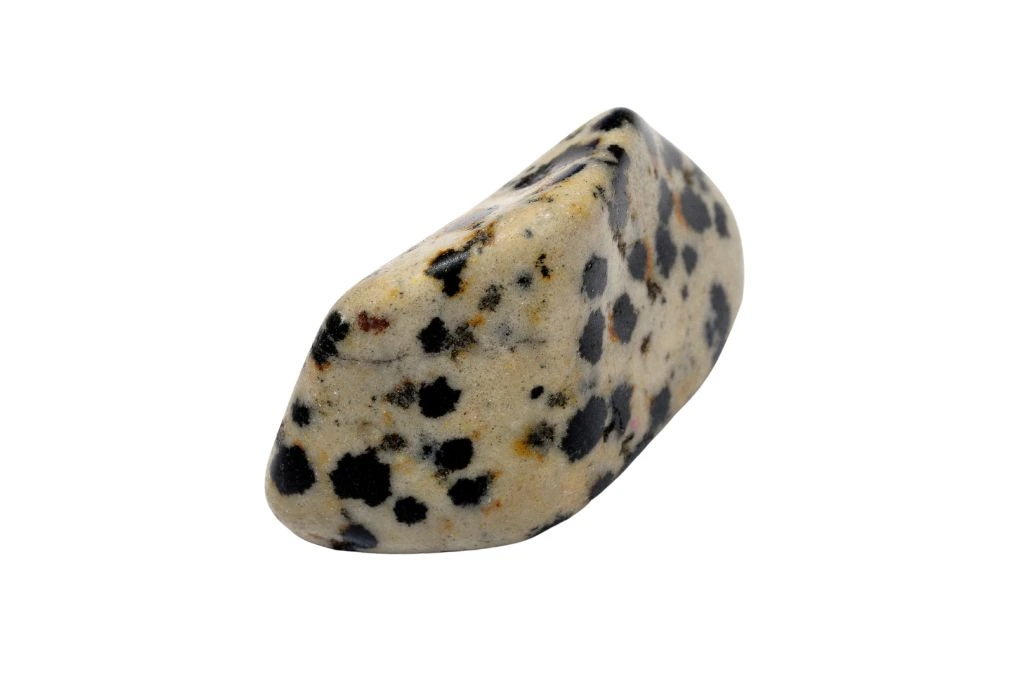
No, Dalmatian Jasper is not toxic, harmful, or dangerous. It’s a silicate crystal in the chalcedony group with black spots resembling a Dalmatian. You can cleanse it with water, but soaking isn’t a good idea.
Healers recommend Dalmatian Jasper for loss, hope, and loneliness.
How to use Dalmatian Jasper safely?
You can rinse and soak Dalmatian Jasper in water safely for a short time. However, avoid soaking it for over 3 hours for crystal elixirs.
Is Chrysocolla Toxic?
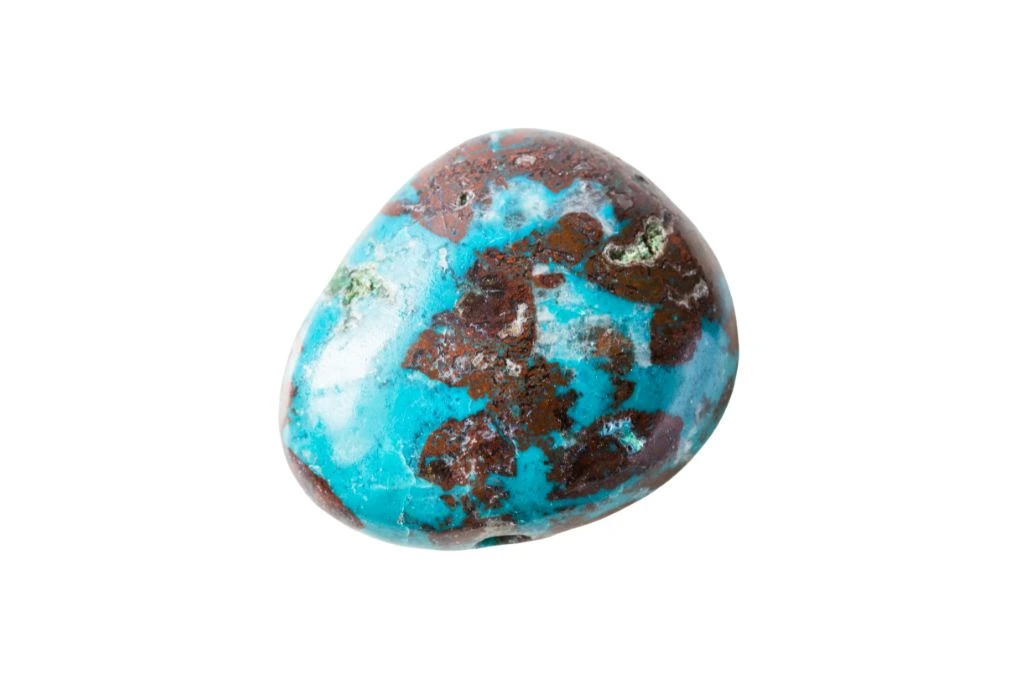
Yes, Chrysocolla can be toxic if you inhale or expose its dust to your skin, as it contains 45% to 75% Copper. However, Chrysocolla is not a dangerous crystal in tumbled or polished forms.
As a dual-chakra stone, Chrysocolla opens the Heart and the Throat Chakras. Bonding with it helps you express yourself freely and confidently.
How to use Chrysocolla safely?
The best way to avoid inhaling or ingesting Chrysocolla’s dust is to use safety gear during the cutting and polishing stages.
You should also avoid handling broken Chrysocolla crystals or using them for making gem water directly.
Is Lepidolite Toxic?
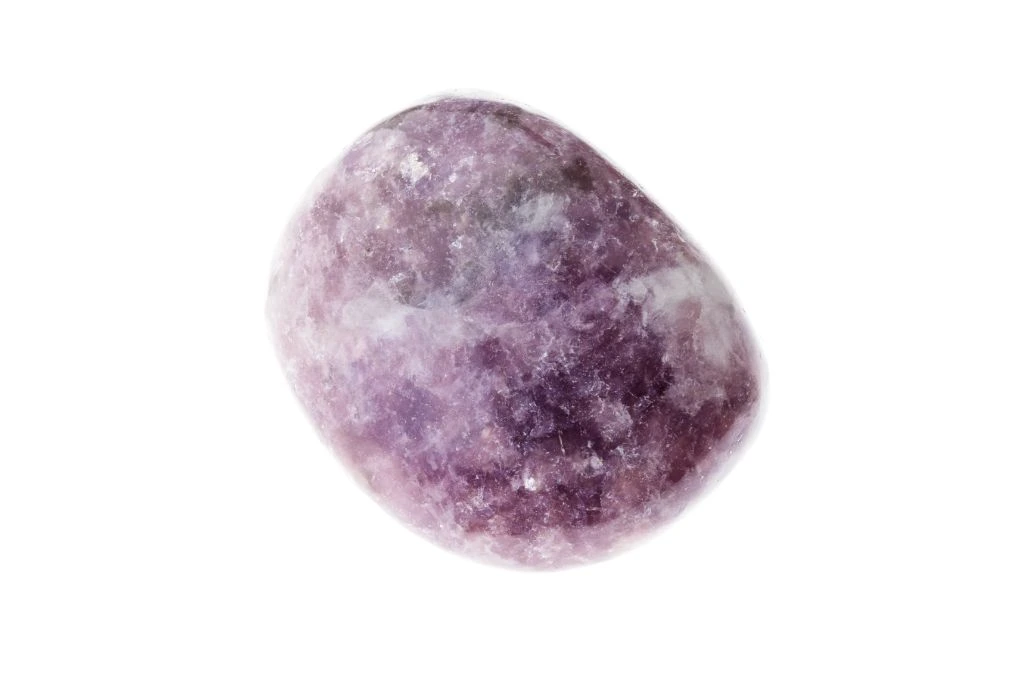
Yes, Lepidolite can be toxic because it contains Aluminum. However, Lepidolite is not dangerous if you don’t ingest or inhale its dust.
Lepidolite is a high-vibration stone that opens the Crown Chakra. It’s great for meditation as it opens the mind’s eye and attracts wisdom and spiritual guidance.
How to use Lepidolite safely?
As a crystal containing Aluminum, you shouldn’t use it for making direct crystal elixirs. The MOHS of Lepidolite is 2.5 to 3, so you should never soak the crystal in water or salt water.
Wash your hands after handling broken Lepidolite crystals.
Is Lapis Lazuli Toxic?
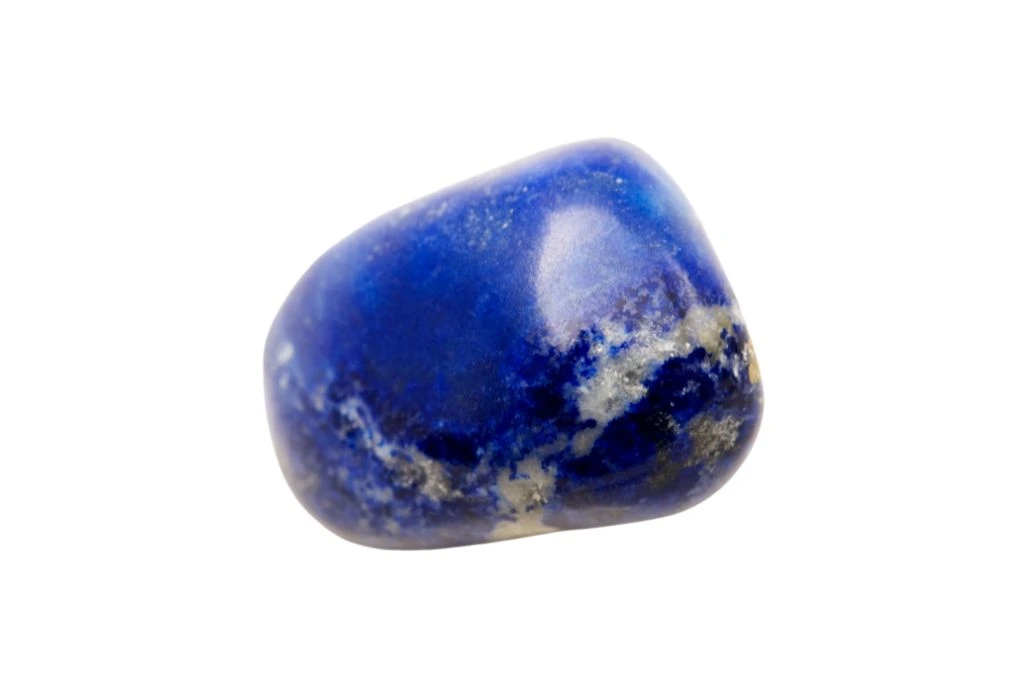
Yes, Lapis Lazuli can be toxic when it comes into contact with water because it contains Sulfur. However, Lapis Lazuli is not dangerous to wear or use once it’s tumbled or polished.
Did you know Lapis Lazuli is the stone of wisdom and intelligence? That’s because it opens the Crown, Third Eye, and Throat Chakras.
How to use Lapis Lazuli safely?
The safest way to use Lapis Lazuli is without cleansing or charging with water or salt water. You should also never directly soak this crystal when making gem water.
Is Bronzite Toxic?
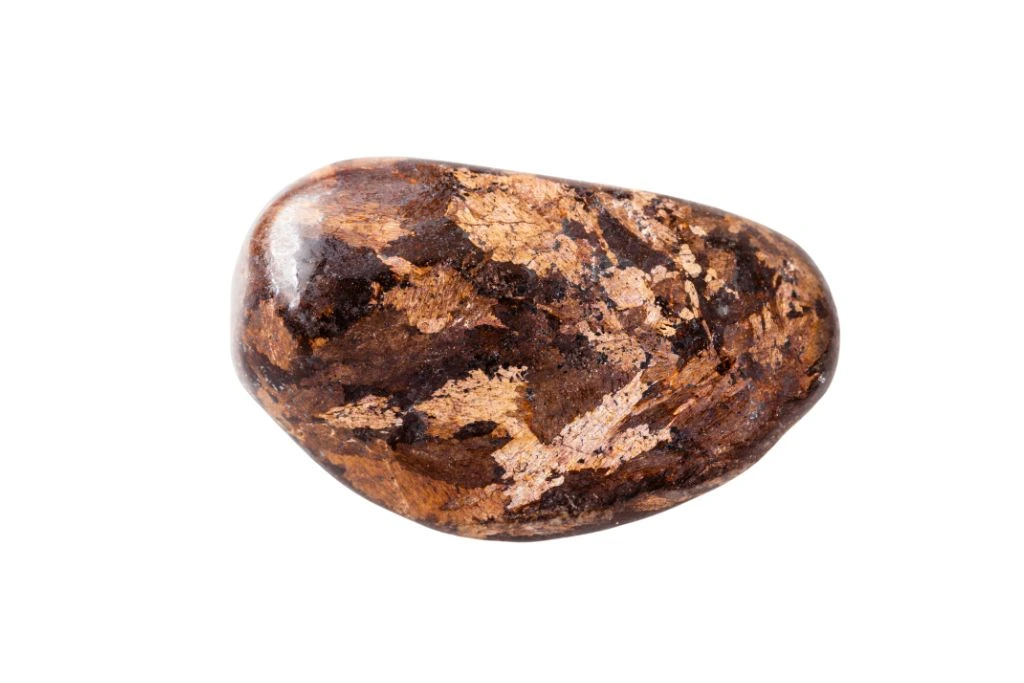
Yes, Bronzite can be toxic if you inhale its dust. Because it’s a silicate mineral, Bronzite is not dangerous for touching and wearing. However, avoid soaking this crystal in water for long periods.
How to use Bronzite safely?
Keeping Bronzite away from moisture is the safest way to use it. Bronzite has a low MOHS hardness of 6 and under, so it’s not a good stone for direct infusions or crystal elixirs.
Is Lithium Quartz Toxic?
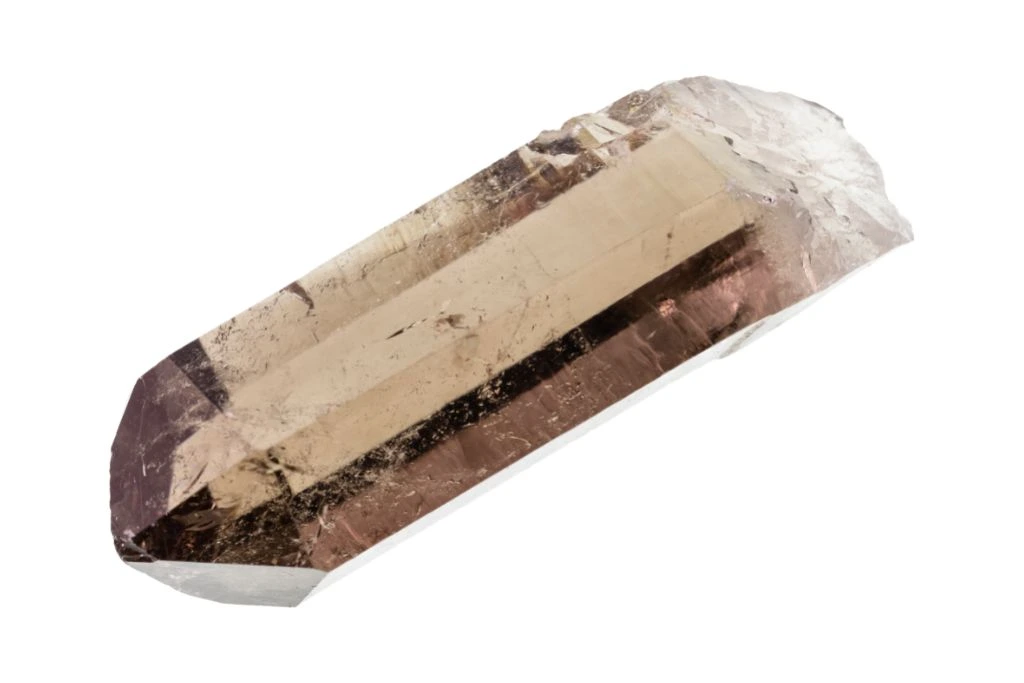
Yes, Lithium Quartz can be toxic when consumed over a reasonable dosage. But Lithium Quartz is not dangerous for touching and wearing.
Did you know Lithium is one of the only crystals scientifically used for mental illness? While it helps manic depression, according to Psychology, spirituality says Lithium Quartz beckons peace and harmony.
How to use Lithium Quartz safely?
The safest way to use Lithium Quartz is without any contact with water or salt. You should also avoid it in crystal elixirs.
Is Kyanite Toxic?
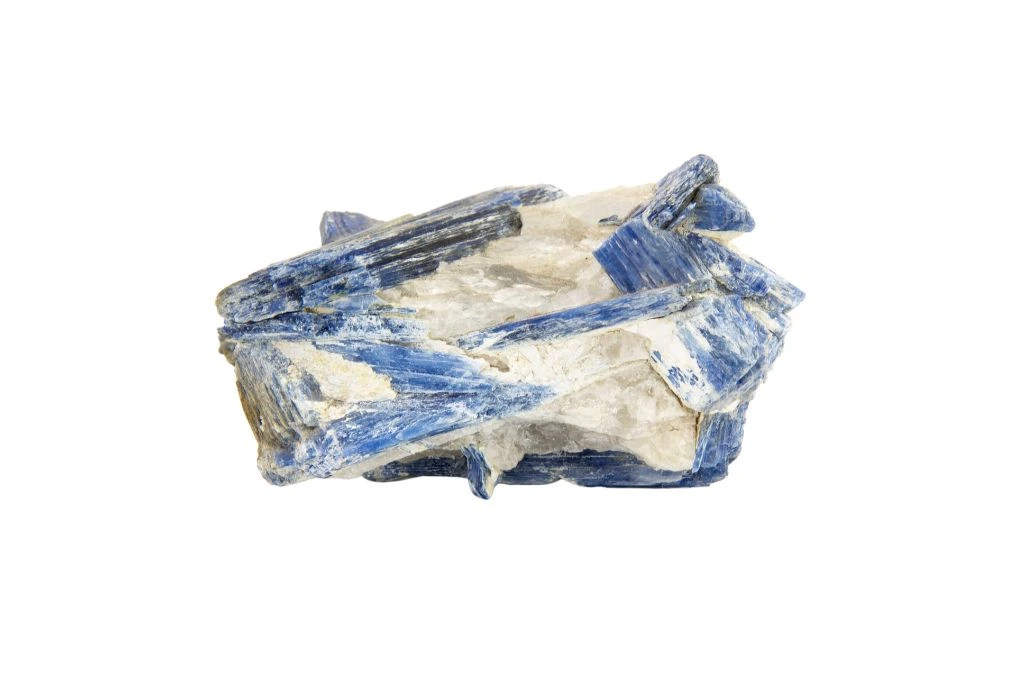
Yes, Kyanite may be toxic when inhaled as dust. The dust of Kyanite contains crystal silica, which is responsible for lung fibrosis. However, Kyanite is not dangerous in cut, polished, or tumbled forms and jewelry.
How to use Kyanite safely?
Wearing or using Kyanite with bare hands is safe, but you should never handle, inhale, or ingest broken Kyanite.
Wear a mask when cleaning up any of your broken dangerous-crystals. Plus, avoid soaking Kyanite directly in water for hours when making infusions.
Is Fuchsite Toxic?
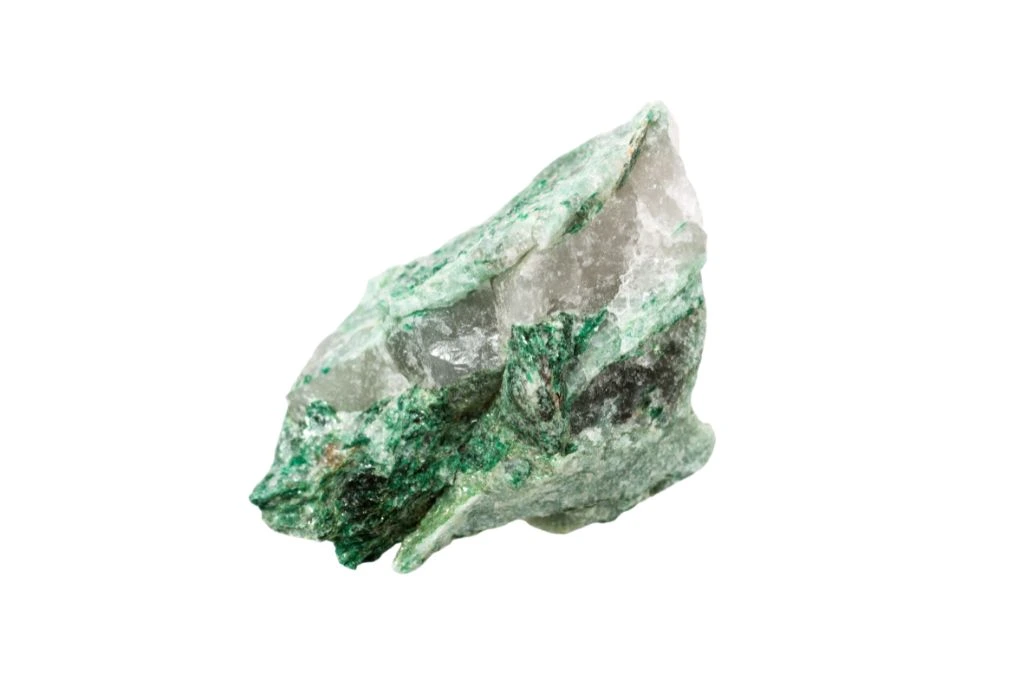
Yes, Fuchsite may be toxic when consumed or inhaled because it contains Chromium and Arsenic. It may also release harmful chemicals when soaked in water for longer periods. However, Fuchsite is not dangerous to wear or use when polished.
How to use Fuchsite safely?
The safest way to avoid the toxicity of Fuchsite is by getting cut, polished, or tumbled crystals instead of raw stones. Also, go for indirect infusions instead of soaking the stone in water for a long time.
Is Carnelian Toxic?
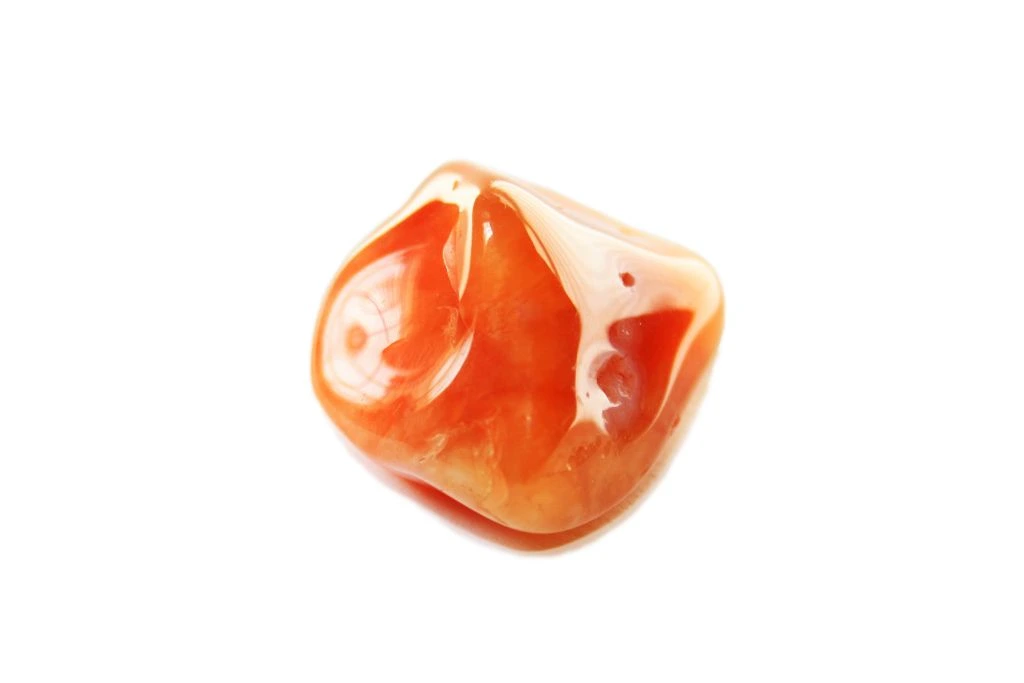
No, Carnelian is not a toxic or dangerous crystal. It’s a safe crystal you can rinse or clean with water. However, it’s not good to soak Carnelian for longer periods in water like most crystals.
Is Calcite Toxic?
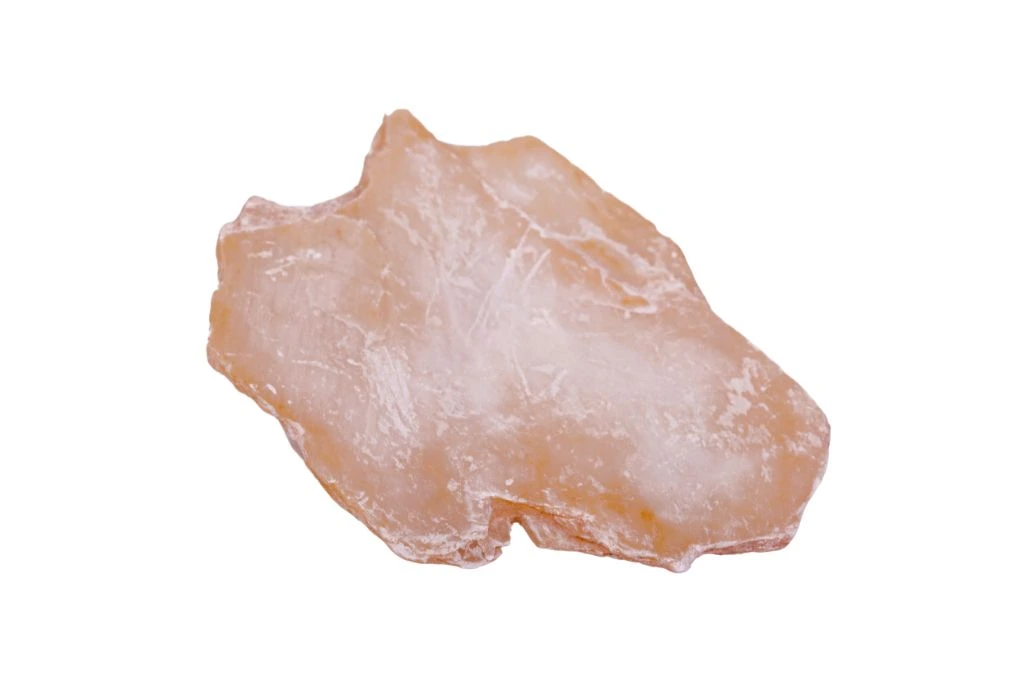
Yes, Calcite can be toxic when soaked in water. However, Calcite is not dangerous without water. Calcite ores may contain Sulfur or Silicate impurities. Furthermore, certain varieties of Calcite may include Zinc and Copper impurities that may cause doubts.
How to use Calcite safely?
The best way to use Calcite safely is without water cleansing or charging rituals. You shouldn’t soak Calcite directly for extended periods when making gem water.
Read more to learn how to make crystal elixir.
Is Amethyst Toxic?
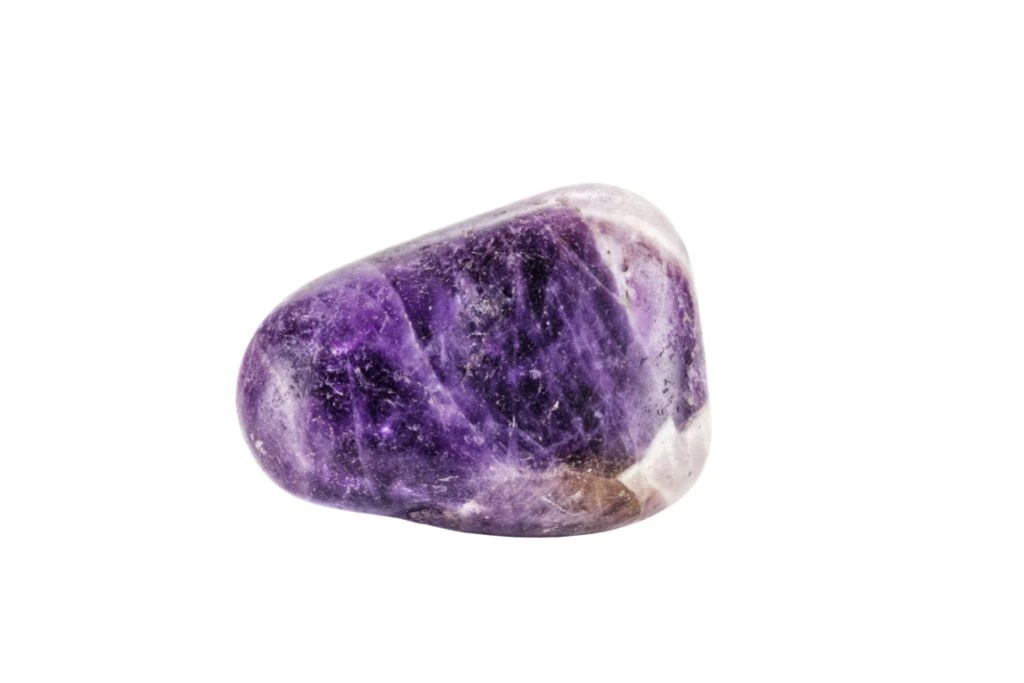
Yes, Amethyst can be toxic when inhaled or ingested in crystal forms because it’s a silicate mineral. However, Amethyst is not dangerous once polished or cut. You can touch, wear, or use it without fretting about toxicity.
Amethyst is a Quartz crystal ideal for opening the Crown and Third Eye Chakras. Charge it with positive affirmations to manifest your goals.
How to use Amethyst safely?
With 7 on the MOHS scale for hardness, Amethyst is good to cleanse and charge with water. It won’t crack, rust, or shatter when soaked in filtered water.
However, you should avoid soaking Amethyst for over three hours in water. Furthermore, don’t put Amethyst in salt water to prevent damaging the crystal.
Is Cinnabar Toxic?
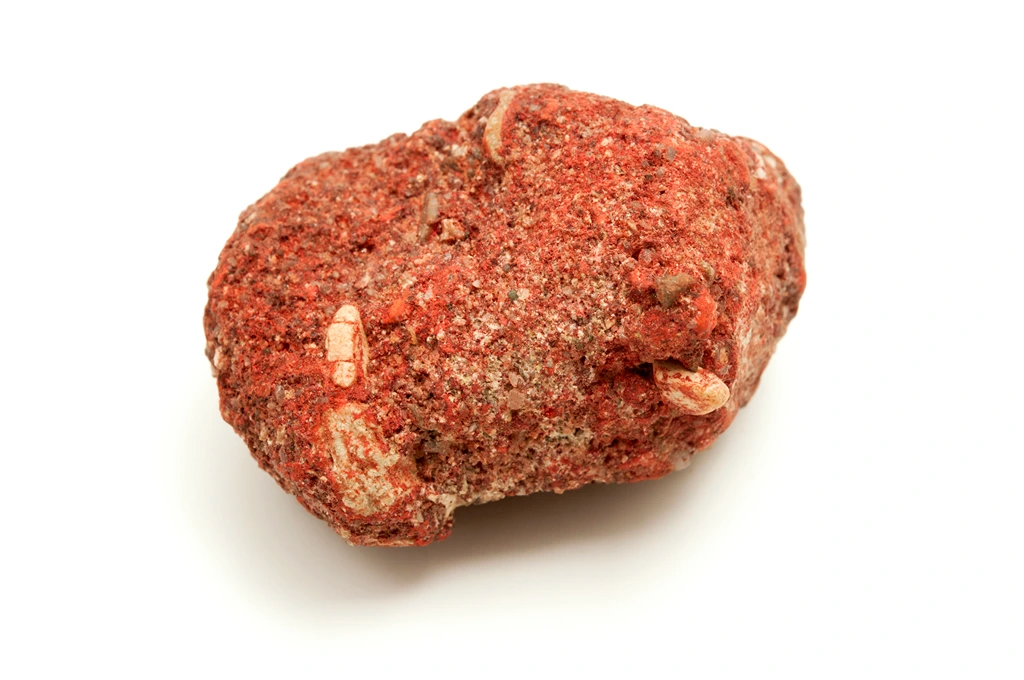
Yes, Cinnabar can be toxic if inhaled or ingested because it contains Mercury. And overheating can cause Cinnabar to release toxic fumes. However, Cinnabar is not dangerous when touched or worn.
Did you know Cinnabar boosts courage? Carrying a charged Cinnabar in your pocket enhances your passion, commitment, and confidence.
How to use Cinnabar safely?
As a chemically inert crystal, Cinnabar isn’t toxic when handled with bare hands.
However, if you live in a hot place, keep it in an airtight box and away from direct heat. You should also avoid grinding or sawing Cinnabar to avoid ingesting or inhaling its toxic dust.
Is Eudialyte Toxic?
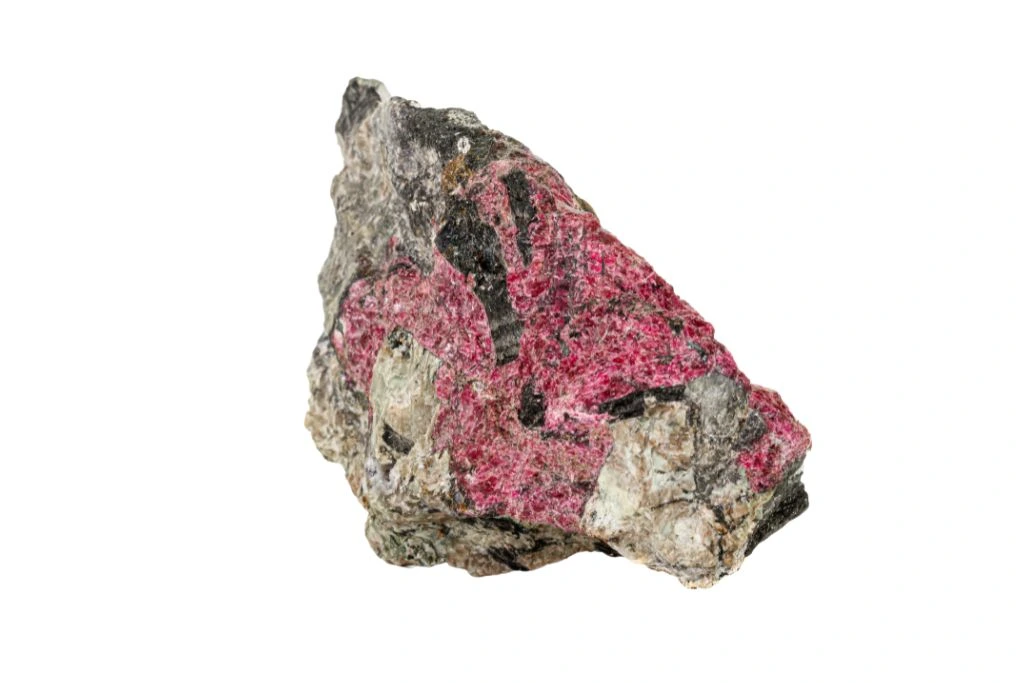
Yes, Eudialyte can be toxic and is one of the radioactive gemstones with Uranium and Strontium. However, Eudialyte is not dangerous in sizes less than 5 carats or 1 gram.
Psychics and healers say Eudialyte invokes the life force energy and opens the higher Heart Chakra. It’s the best stone for universal connection.
How to use Eudialyte safely?
Eudialyte in small pieces is completely safe to use. However, you should not overheat or rinse the crystals with water. When making crystal elixirs, go for indirect infusions.
Is Hutchinsonite Toxic?
Yes, Hutchinsonite is extremely toxic and dangerous. It’s a natural cocktail of the most toxic elements – thallium, arsenic, and lead. Mere contact with Hutchinsonite can lead to hair loss, nerve problems, and death.
How to use Hutchinsonite safely?
There’s no safe way to use Hutchinsonite. It should always be sealed and never in direct contact with your skin, air, or water.
Is Stibnite Toxic?
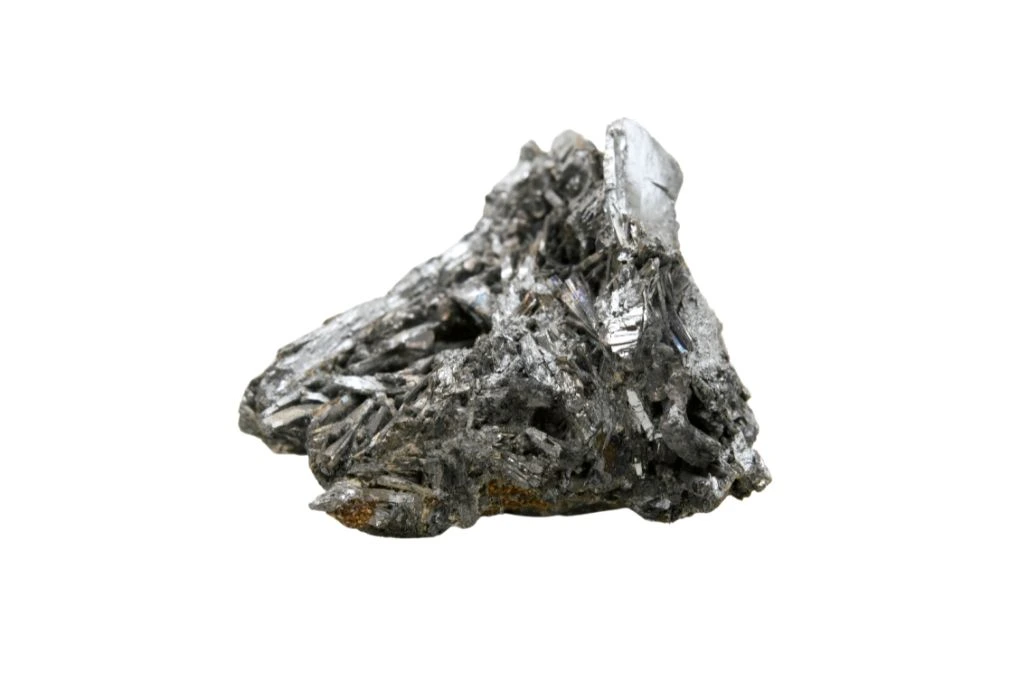
Yes, Stibnite is dangerous in its natural form. As an ore of Antimony and Lead, this crystal can cause effects similar to arsenic poisoning.
Spiritually, Stibnite is one of the best stones for astral travel.
How to use Stibnite safely?
Stibnite is one of the most dangerous crystals on Earth. The only way to safely use it is by gazing at it from a distance. Always wear gloves before touching a Stibnite crystal.
Is Torbernite Toxic?
Yes, Torbernite is one of the most dangerous crystals in the world. It contains Uranyl, Phosphate, and hydrated green Copper.
It’s believed to attract unforeseen riches, success, and wealth.
Do you know Torbernite is a Uranium ore? Torbernite naturally releases radon, and long-term exposure to radon causes lung cancer.
How to use Torbernite safely?
There is no way to touch Torbernite safely with your bare hands, so keep it in a sealed chamber and gaze into it to visualize its spiritual benefits.
Fun Fact: Did you know Torbernite is called the “mineral from hell” because it’s too dangerous?
FAQ
- Are there poisonous rocks?
Yes, there are poisonous rocks naturally available in the world. Some dangerous crystals may irritate your skin, and others may be poisonous and dangerous.
- What is the most toxic gemstone?
Arsenopyrite is the most toxic gemstone in the world. It contains Arsenic Sulfide and sometimes a coating of soluble Arsenic.
Chalcanthite is also equally toxic as Arsenopyrite. It causes immediate Copper poisoning as it releases Copper in forms that are absorbed by the body.
- Is Quartz toxic to touch?
No, Quartz crystals aren’t toxic to the touch unless it’s Lithium Quartz soaked in water for hours on end. It’s not harmful when ingested but might cause major respiratory problems when inhaled in powder form.
- Is Pyrite dust dangerous?
Yes, Pyrite dust is dangerous because it may contain several toxic elements like Arsenic and Sulfur.
- Is Fluorite toxic to touch?
No, Fluorite is not toxic to touch, wear, or use. However, Fluorite turns into Fluorine as a gas, which is highly toxic.
- Is Purple Fluorite toxic?
Yes, Purple Fluorite can be toxic if it turns into its gaseous state from the solid state.
- What can harm Amethyst?
Prolonged exposure to sunlight and water is the chief cause of damage, like a color change or cracks in Amethyst crystals.
- Is Ocean Jasper toxic?
Yes, Ocean Jasper can be considered a toxic crystal because it contains Arsenic. However, Ocean Jasper is not toxic to wear, use, or touch.
- Is Green Aventurine toxic?
Yes, Green Aventurine can be called toxic because it contains Fuchsite. The Aluminum in Fuchsite can be toxic when inhaled or ingested. But Green Aventurine is not toxic or dangerous to wear, use, or touch.
- Is Celestite toxic?
Yes, Celestite can be considered toxic because it contains Strontium and Sulfur. However, Celestite is not dangerous to touch or wear unless you’re in an extremely hot area. It’s toxic only when ingested, inhaled, or heated.
- What is the most cursed gemstone?
The Hope Diamond is the world’s most cursed gemstone because murders, stabbings, beatings, insanity, and suicide were common with its owners.
Start Using Crystals Safely
We learned about many dangerous crystals with Asbestos, Sulfur, Chromium, Uranium, Aluminum, Lead, and other toxic elements. Although they heal your body, mind, and soul, they may lead to side effects if you aren’t careful enough.
If your crystal contains any of the above toxic elements, please avoid using them for making direct elixirs. Even direct touching isn’t allowed for some of the most toxic stones.
Healing crystals are powerful because they imbue the essence of Mother Earth, so research the toxicity and risk of new crystals before touching them. Also, avoid touching any crystal before cleaning broken pieces or dust.
Do you have any dangerous stones in your collection? How do you use them safely? Write to us and share it with our community!


